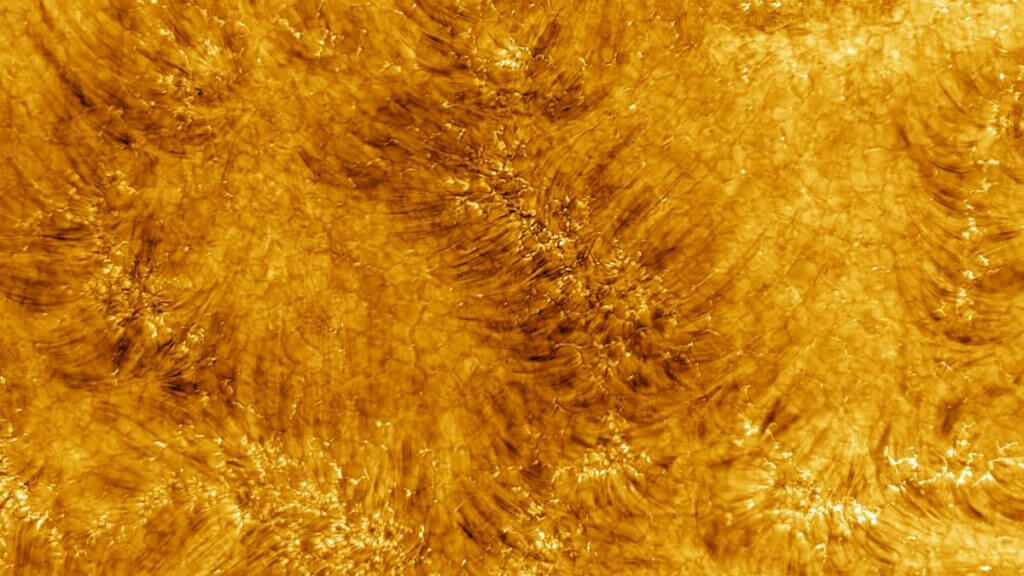
Mysterious region of the sun shines in new photo from world’s largest solar telescope (Image Credit: Space.com)
The world’s most powerful solar telescope has captured the first-ever detailed image of the sun’s chromosphere, the layer of its atmosphere just above its surface.
The newly released image of the chromosphere shows an area that is around 51,000 miles (82,000 kilometers) wide and was captured by the world’s most powerful solar telescope, the Daniel K. Inouye Solar Telescope (DKIST) in Hawai’i, on June 3, according to a statement. DKIST is in a one-year transition period between construction and regular science operations during which it is gathering select observations of the sun amid instrument work and other final preparations.
The chromosphere, like the outer layer of the sun’s atmosphere called the corona, is usually difficult to see because the light from the photosphere, which can loosely be described as the star’s surface, usually overpowers it. The region can usually only be seen as a bright red ring around the main body of the sun in images taken during a total solar eclipse, when light from the photosphere is blocked by the moon.
Related: World’s largest solar telescope produces never-before-seen image of our star
But the Daniel K. Inouye Solar Telescope — built and operated by the National Solar Observatory (NSO), which is funded by the National Science Foundation (NSF) — has changed that.
The telescope aims to revolutionize solar physics, including scientists’ understanding of the sun’s magnetic field.
One key piece of that is the study of space weather, outbursts from the sun that include bright solar flares and coronal mass ejections (CMEs) that shoot globs of material into space. Space weather can be hazardous to communications and energy infrastructure here on Earth; it’s a particular priority now because the 11-year solar cycle of activity is on the upswing.

DKIST is located at the Haleakalā Observatories site on the island of Maui, Hawaiʻi, an important site with spiritual and cultural significance to Native Hawaiians. At an altitude of 10,000 feet (3,000 meters) and surrounded by ocean, this location grants the telescope the long daylight hours a solar telescope requires and the clear skies with minimal interference from Earth’s atmosphere needed to observe the sun’s corona and chromosphere.
DKIST uses the largest mirror of any sun-studying instrument. This mirror, 13 feet (4 m) wide, helps the telescope collect more sunlight than any other solar telescope. The result is the clearest and highest resolution images of our star ever collected.

On Aug. 31, NSF leaders and members of both the scientific and Native Hawaiian communities met at the facility to formally inaugurate the telescope, which has been a quarter of a century in the making.
“NSF’s Inouye Solar Telescope is the world’s most powerful solar telescope that will forever change the way we explore and understand our sun,” NSF Director Sethuraman Panchanathan said in a statement. “Its insights will transform how our nation, and the planet, predict and prepare for events like solar storms.”
Follow us on Twitter @Spacedotcom and on Facebook.





